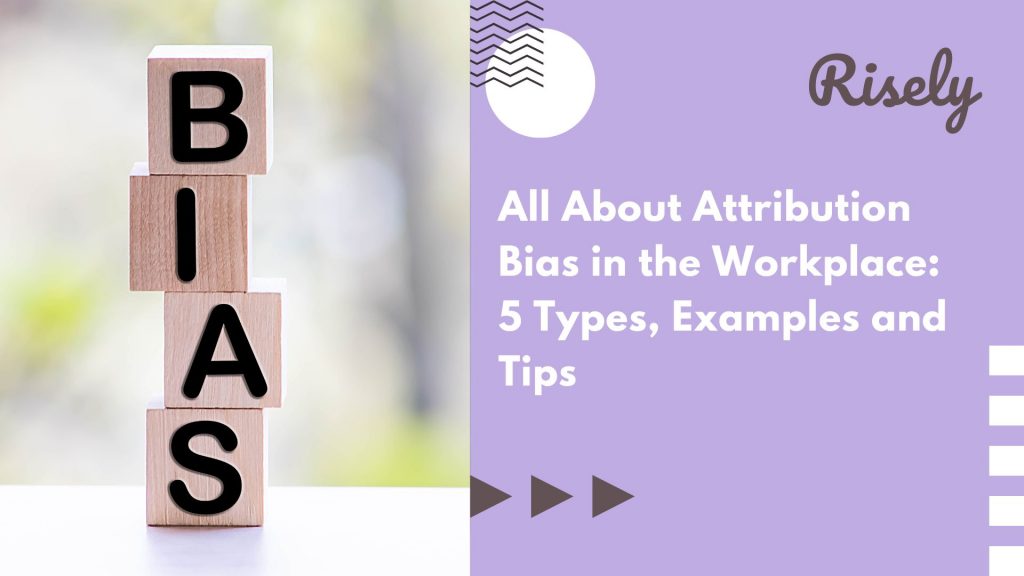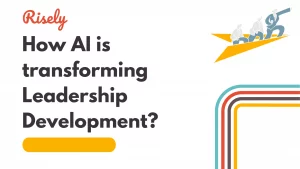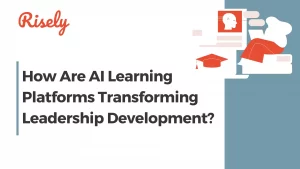We’ve all been there: a colleague misses a deadline, and you instantly blame their laziness. Or, you deliver a stellar presentation and credit it solely to your own brilliance. These snap judgments? Attributional bias at play. This sneaky bias clouds our thinking, impacting how we interpret situations and interact with others. In the fast-paced world of work, it can be a recipe for misunderstandings and missed opportunities.
But fear not! By understanding attribution bias and its sneaky ways, we can create a more collaborative and productive work environment. This blog will be your guide, unpacking the different types of attribution bias, its influence on teams and recruitment, and – most importantly – how to mitigate its effects. Let’s clear the air and foster better communication and teamwork, one unbiased interaction at a time.
Understanding Attribution Bias in the Workplace
You and your team are working on a project deadline looming large. You pull an all-nighter, crafting a brilliant solution that saves the day. Presently basking in the afterglow of success, do you credit your superhuman effort and strategic thinking? Or, perhaps, you downplay your role, attributing the win to sheer luck or a particularly easy problem. This tendency to explain events, both positive and negative, through a skewed lens is called attribution bias. It’s a brain shortcut, a way of making sense of the world around us. But here’s the catch: these shortcuts can sometimes lead us astray, impacting how we view ourselves, our colleagues, and ultimately, the entire team dynamic. Let’s say your co-worker misses a deadline. Attribution bias might have you jumping to conclusions. “Typical John, always cutting corners!” But what if John was unexpectedly swamped with personal issues? Our tendency to focus on internal factors (John’s laziness in this case) instead of external situations creates a gap in understanding. The same goes for negative self-talk. Project falls flat? It must be because you’re not good enough, right? Wrong! External factors like lack of resources or unclear communication could be to blame. By recognizing this bias, we can silence our inner critic and focus on improvement strategies. The key takeaway? We all have biases, and that’s okay. The important thing is to be aware of them. By acknowledging these mental shortcuts and fostering open communication within your team, you can create a more collaborative and supportive work environment. So next time you find yourself making an attribution about yourself or a colleague, pause, take a breath, and consider the bigger picture. It might just be the key to fostering a workplace that thrives on understanding and teamwork!Types of Attribution Bias in the Workplace and Their Impact
Fundamental Attribution Error
One type of attribution bias that can occur in the workplace is the Fundamental Attribution Error. This bias refers to the tendency to attribute a person’s behavior to their intrinsic character rather than to situational factors. This can have severe consequences in the workplace, leading to unfair judgments and mistreatment. Managers should be aware of the effects of the Fundamental Attribution Error and be able to correct it when it occurs. One way to do this is by encouraging employees to consider alternative explanations for someone’s behavior before making a judgment. Additionally, providing feedback and coaching can help employees better understand their biases and work towards correcting them. By avoiding attribution bias in the workplace, managers can help create a more fair and inclusive environment for all employees.Actor-Observer Bias
One type of attribution bias commonly found in the workplace is actor-observer bias. This bias is characterized by the tendency to attribute personal qualities to oneself or others based on our observations or interactions. In the workplace, this bias can significantly impact our work performance and be challenging to overcome. Employers may use actor-observer bias to evaluate employees and assign them different levels of responsibility. Individuals with this bias typically believe they are more competent than others, which can lead to conflicts and misunderstandings within the workplace.Self-Serving Bias
One common type of attribution bias in the workplace is self-serving bias. This refers to the tendency to give ourselves positive feedback for successes and downplay our mistakes or failures. As a result, we tend to view our accomplishments more favorably and our failures more negatively, leading to overconfidence, complacency, and decreased motivation. Self-serving bias can hurt productivity and morale in the workplace, as it may prevent individuals from taking responsibility for their mistakes or working towards improving their performance. Therefore, it’s essential to be aware of this bias and actively work towards reducing its effects to foster a more collaborative and productive work environment.Other Interesting Reads
Hostile Attribution Bias
One type of attribution bias that can occur in the workplace is hostile attribution bias. This happens when people attribute negative qualities to others without any concrete reason. This can lead to conflict and strained relationships within the workplace. People who exhibit hostile attribution bias are more likely to blame others for mistakes or problems, even if those individuals had nothing to do with the situation. They may also be more likely to take punitive measures against employees who make mistakes rather than trying to understand and address the underlying issues. Identifying and addressing hostile attribution bias in the workplace is essential to fostering a more positive and productive work environment.Leadership attribution bias
One type of attribution bias that can arise in the workplace is leadership attribution bias. This occurs when individuals attribute success or failure to individual leaders rather than the team or organization. While it may seem logical to credit individual leaders for their role in achieving success, this bias can harm motivation and performance.Examples of Attribution Bias in the Workplace
- Fundamental Attribution Error: A manager assumes that a new employee’s low productivity is due to their inherent laziness rather than considering that they might struggle with a difficult task.
- Actor-Observer Bias: An employee attributes their mistakes to external factors, such as confusing instruction from their supervisor, but attributes their colleagues’ mistakes to internal factors, such as incompetence.
- Self-Serving Bias: An employee takes credit for the success of a project, attributing it to their hard work and skill, but blames a failure on external factors, such as lack of resources or the actions of other team members.
- Hostile Attribution Bias: An employee perceives criticism from a coworker as an attack on their character, leading them to respond defensively and with hostility.
- Leadership Attribution Bias: A manager attributes their team’s success solely to their own leadership skills rather than recognizing the contributions of individual team members or external factors such as market conditions.
How to Reduce Attribution Bias in the Workplace?
Here are some strategies that can help reduce attribution bias in the workplace:- Encourage open communication: Encourage employees to communicate openly and honestly with each other. This will help to create an environment of mutual understanding and trust, reducing the likelihood of attribution bias.
- Focus on behavior: When discussing performance or behavior, focus on specific actions or behaviors rather than personality traits or internal characteristics. This will help to avoid making assumptions based on stereotypes or preconceptions.
- Encourage empathy: Encourage employees to put themselves in others’ shoes and consider the situational factors that may have influenced their behavior. This will help to reduce the tendency to attribute behavior to internal characteristics.
- Provide training: Provide training on attribution bias and how to recognize and overcome it. This can help employees develop a greater awareness of their biases and become more effective at managing them.
- Foster a diverse and inclusive workplace: Creating a diverse and inclusive workplace can reduce attribution bias by exposing employees to a broader range of perspectives and experiences. This challenges stereotypes and preconceptions and promotes a more open and inclusive culture.
Conclusion
We’ve unveiled the culprit behind many a workplace miscommunication – attribution bias. Remember, it’s not about assigning blame, but about awareness. By recognizing these biases in ourselves and others, we can short-circuit misunderstandings and cultivate a workplace of transparent communication and stellar teamwork. So, the next time you find yourself making a snap judgment about a colleague, take a pause. Consider the situation from different angles and remember, there’s usually more to the story than meets the eye. By embracing this awareness, you’ll be well on your way to fostering a more equitable, productive, and bias-busting work environment for everyone. Now go forth and conquer those biases!Grow your communication skills to spread healthy habits in your team.
Take the free communication skills assessment for managers to discover blind spots that hold you back.
Frequently Asked Questions
What is an example of attribution bias?
Attribution bias refers to individuals’ tendency to attribute others’ behavior to internal, dispositional factors rather than external, situational ones. For example, assuming someone is lazy instead of considering that they may be dealing with personal issues that affect their work.
What is value attribution bias in the workplace?
Value attribution bias occurs when individuals assume others share their values and beliefs and judge them accordingly. This can lead to unfair evaluations of colleagues with different backgrounds or perspectives. In addition, this bias can affect performance reviews, promotions, and team dynamics in the workplace.
What are the three attribution biases?
The three attribution biases are fundamental attribution error, self-serving bias, and actor-observer bias. Fundamental attribution error is the tendency to overemphasize dispositional factors when evaluating others’ behavior. Self-serving bias is the tendency to attribute one’s successes to internal factors and failures to external factors. Finally, actor-observer bias is the tendency to attribute others’ behavior to internal factors and one’s behavior to external factors.
What does attribution mean in a workplace?
Attribution in the workplace refers to evaluating the reasons behind an individual’s behavior or performance. Understanding attribution is essential for managers and colleagues to provide feedback, support growth and development, and create a positive work environment. In addition, recognizing attribution biases can help individuals make fair and accurate evaluations and avoid unfair judgments.






